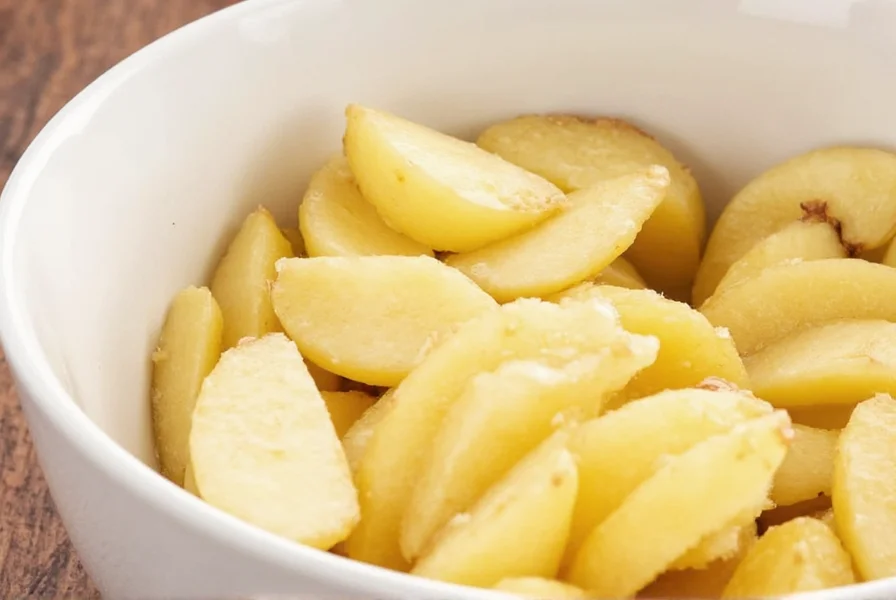Peeling ginger properly matters more than you might think. Many home cooks waste up to 30% of this valuable root using inefficient methods. The right technique preserves maximum ginger flesh while removing only the tough, fibrous skin. Whether you're preparing a curry, making ginger tea, or adding fresh flavor to stir-fries, proper peeling ensures you get the most from your ginger root.
Why the Spoon Method Reigns Supreme
Among all ginger peeling techniques, the humble spoon stands out as the most effective tool. The curved edge of a standard teaspoon perfectly conforms to ginger's irregular shape, allowing you to remove thin layers of skin without sacrificing valuable flesh. Unlike vegetable peelers that often dig too deep or knives that require precision, a spoon glides along the surface with minimal effort.
Professional chefs and home cooks alike prefer this method because it works equally well on young, tender ginger with thin skin and older, fibrous roots with thicker skin. The spoon technique also minimizes waste - you'll typically preserve 15-25% more usable ginger compared to using a traditional peeler.
| Peeling Method | Waste Percentage | Time Required | Best For |
|---|---|---|---|
| Spoon technique | 5-10% | 1-2 minutes | All ginger types |
| Vegetable peeler | 15-25% | 1-3 minutes | Young, smooth ginger |
| Knife method | 10-20% | 2-4 minutes | Experienced users |
| Freezing method | 5-10% | 10+ minutes | Large quantities |
Step-by-Step: How to Peel Ginger with a Spoon
This foolproof technique works for both small knobs and large roots:
- Rinse the ginger root under cool water to remove surface dirt
- Hold the ginger firmly in one hand and a regular teaspoon in the other
- Position the edge of the spoon against the ginger skin at a 30-degree angle
- Gently scrape the spoon along the surface, following the root's natural curves
- Rotate the ginger as you work to access all sides
- Rinse the peeled ginger briefly to remove any remaining skin fragments
The spoon's curved edge naturally follows ginger's irregular shape, removing just the thin outer layer without digging into the valuable flesh beneath. For particularly knobby sections, use the tip of the spoon for better control.

Alternative Ginger Peeling Methods
Vegetable Peeler Technique
A standard Y-shaped vegetable peeler works reasonably well on young ginger with smooth skin. Hold the ginger firmly and peel in long strokes away from your body. This method becomes problematic with older, more fibrous ginger where the skin grows into deep crevices. You'll often remove too much flesh trying to reach skin in these areas, resulting in significant waste.
Knife Peeling Method
Using a paring knife gives you precise control but requires more skill. Carefully slice thin layers from the ginger, following its contours. This method works well if you're already planning to slice or dice the ginger immediately after peeling. The main drawback is increased risk of cutting yourself, especially with small or irregularly shaped pieces.
Freezing Method for Large Quantities
When preparing multiple roots for preservation or large recipes:
- Place unpeeled ginger in the freezer for 1-2 hours until slightly firm
- Remove and immediately peel using a spoon or peeler
- The cold temperature makes the skin contract and separate more easily
- Peel within 10-15 minutes before the ginger thaws completely
This technique works particularly well for preserving ginger in bulk, as the frozen state makes the skin more brittle and easier to remove.

Pro Tips for Minimizing Waste
Maximize your ginger yield with these professional techniques:
- Work under running water - Helps loosen stubborn skin fragments and keeps the ginger clean
- Peel immediately before use - Ginger oxidizes quickly once peeled, losing flavor and moisture
- Save your scraps - Collect ginger peel in a freezer bag for making tea or broth
- Use the 'knuckle' method - For small knobs, hold ginger against your knuckle for better control while peeling
- Peel in sections - Focus on one small area at a time rather than trying to peel the entire root at once
What to Do With Ginger Peel
Don't throw away your ginger peel! It contains valuable flavor and nutrients:
- Simmer in water for 15-20 minutes to make ginger tea
- Add to vegetable stock for extra depth of flavor
- Freeze in ice cube trays with water for future cooking
- Compost if you have a garden system
Common Mistakes to Avoid
Steer clear of these ginger peeling pitfalls:
- Using a dull peeler - Dull tools dig deeper, wasting more ginger
- Peeling too far in advance - Peeled ginger dries out quickly
- Trying to peel wet ginger - Water makes the skin slippery and harder to remove
- Using excessive force - Gentle pressure yields better results with less waste
- Peeling under bright light - Natural light helps you see the skin layer more clearly
Storing Peeled Ginger Properly
Once peeled, ginger begins to lose moisture and flavor. For best results:
- Store in an airtight container with a damp paper towel
- Refrigerate for up to 3 weeks
- Submerge completely in sherry or vodka for extended preservation
- Freeze in small pieces for easy portioning in future recipes
Frequently Asked Questions
Can you eat ginger skin?
Yes, ginger skin is technically edible, but it's fibrous and can have a bitter taste, especially on older roots. Most recipes call for peeled ginger to ensure the best texture and flavor. Young ginger with thin, smooth skin can sometimes be used unpeeled if thoroughly washed.
Why is my ginger so hard to peel?
Older ginger develops thicker, more fibrous skin that grows into deep crevices, making it harder to peel. If your ginger feels particularly tough, try the freezing method - chilling it for 1-2 hours makes the skin contract and separate more easily from the flesh.
How thin should I peel ginger?
You should remove only the outermost layer of skin, which is typically 1-2mm thick. The spoon method excels here because it naturally follows the root's contours, removing minimal flesh. If you're seeing significant yellow flesh coming off with the skin, you're peeling too deeply.
Does peeling ginger remove nutrients?
Most nutrients are concentrated in the flesh just beneath the skin. While some nutrients exist in the skin itself, the spoon method preserves the nutrient-rich layer immediately under the skin. Peeling too deeply with a knife or peeler removes more of these valuable compounds.
Can I use a potato peeler for ginger?
Yes, but with limitations. A standard Y-shaped vegetable peeler works reasonably well on young ginger with smooth skin. However, it struggles with older, more fibrous ginger where the skin grows into deep crevices. You'll often remove too much flesh trying to reach skin in these areas, resulting in significant waste compared to the spoon method.










 浙公网安备
33010002000092号
浙公网安备
33010002000092号 浙B2-20120091-4
浙B2-20120091-4